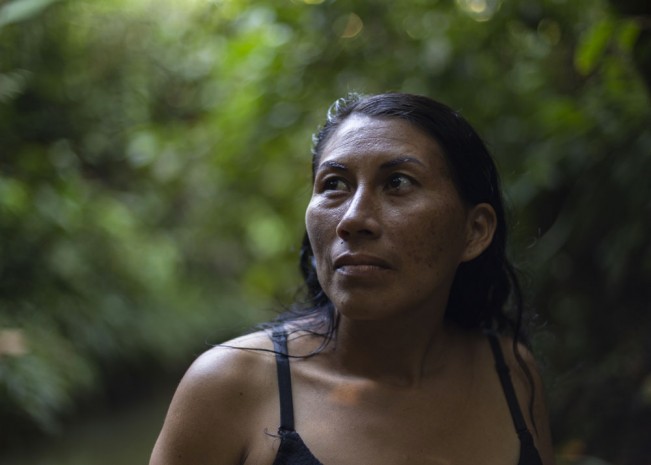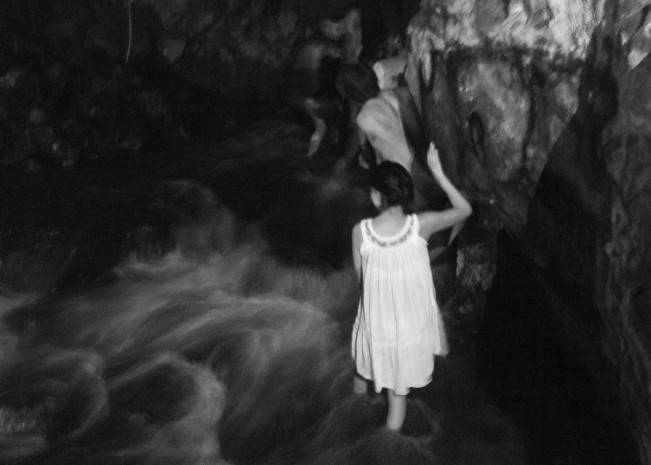Focus on Ecuadorian Photographers: Daniela Beltrán B.
This week we are featuring the work of Ecuadorian Photographers. Ecuador straddles part of the Andes Mountains and occupies part of the Amazon basin. Situated on the Equator, from which its name derives, it borders Colombia to the north, Peru to the east and the south, and the Pacific Ocean to the west. The landscape and culture inform the artists featured this week.
Daniela Beltrán B. is a visual artist and photographer whose work lies between documentary and fine art. In 2020 she completed her BFA in Photography at the Academy of Art University in San Francisco, where she is now based at. Born and raised in Ecuador, she had the opportunity to constantly travel back and forth from California, which allowed her to expand her understanding of different cultures and societies. Throughout this time, nature has remained a constant subject in all of her work. Daniela’s deep passion for people and the environment brought her to collaborate with non-profit organizations in the Amazon Rainforest. She is currently working on a long-term project documenting the lives and challenges of a Waorani family. Daniela’s introspective process is reflected in the work she produces, with the sensitivity from which she captures the living environment that surrounds us or interprets inner concepts. Her work explores human-nature relationship, indigenous culture, and the spiritual realms of consciousness.
Follow Daniela Beltrán on Instagram: @danielabeltranb
By capturing the essence of natural elements, environment, people, or myself, I seek to touch on the subtleties that sometimes we miss. The natural world and the unseen world are constantly playing a role in both my work and my life. While my medium is primarily photography, I also incorporate video in my artistic expression. I explore human nature, identity, consciousness, energy, death and the interconnectedness of all. Whether it is by representing what underlies behind the material, or by documenting indigenous communities, my work is an on-going observation of our collective essence and human transformation. – Daniela Beltrán
What was the first image or circumstance that motivated you to photograph?
There was no image per se, it was a person who inspired me. My uncle Miguel opened a window to the world of photography. He used to do it as a hobby while pursuing his career in the United Nations towards peace and development. I was fascinated by photography, not only by the photographic process but by the unique perspective that is learnt through observing light’s subtlety, color, form and the beauty that surrounds us. He once told me, “When you start practicing photography and observing the world from this perspective, you never see things as you used to”. I wanted to observe from a place of subtlety and consciousness. — When I was introduced to this art form, I was in my own healing process and photography was a very important part of that process. It was a dark time in my life and photography awoke this genuine and unique interest, so we walked hand in hand.
How is our desire to explore the world exposed in photography?
On one hand, it is the desire to share stories and express concepts. On the other hand, it is curiosity, the curiosity of learning about different realities and world-views. However different they may be from our own, there is an unwavering collective connection – that of being human and living on this planet -. Thus, it is important to share social, spiritual and environmental knowledge.
It is our willingness to connect with each other and feel. There is something quite unique in photography, which is a door to others’ intimacy and freezing – through emotion – an inimitable moment.
I think that photography’s most important application is creating consciousness and directing our attention to current relevant topics.

© Daniela Beltrán B., Waorani
Which creative fields or people have inspired your work?
Since I was very young I was fascinated by documentaries, stories, real life facts and nature. These were great sources of inspiration. I am very interested in esotericism and mysticism. This has led my path to sharing with people, guides, shamanes who have had a huge influence in my spiritual growth and therefore, my artistic development. I have also found inspiration in books that have translated complex concepts into language (i.e. Deepak Chopra, Ram Dass, The Kybalion,The Bardo Thodol, etc.) I believe that navigating the complexity and simplicity of life’s mysteries goes hand in hand with my own artistic expression and how to make the best use of my tools.
However, I was not always focused on documentary photography, a great deal of my work has come to representing complex concepts. I was looking for something that was not literal, subtle, in order to speak about certain subjects and be able to transmit something. So I began taking steps to a more organic creation and sensitize my observation. Inspiration is everywhere; dreams, books, conversations, practices, music, the Ecuadorian Amazon, Ecuador…
How can photographers represent other ethnic groups in a responsible and respectful manner?
I think it’s important to have a genuine intention and cease imposing our ideas about whom we photograph. Also, walking with humility and openness in order to learn from others, without controlling the narrative or pretending to know more than others. Questions matter too, and being able to understand people and respect their decision if they might feel uncomfortable. Every decision that was made when creating a photograph, will communicate its perspective; the composition, the subject, when, how, etc.
We are made up of our experiences, beliefs and culture. I do not believe in absolute objectivity. However, we ought to be conscious about our role when portraying people and try to do so in the most transparent and genuine manner. As photographers, it is easy to have certain expectations about others’ image or to romanticize our subjects. But I believe we should come close and learn, listen, and on that path we might find a connection and understand the responsibility of creating a photograph.
jhkad
What role has spirituality played in your artistic process?
My personal growth as a human, woman and artist has come hand in hand with my spiritual path. When delving into this approach, I found the need to share certain concepts that I found limited by written or spoken language. This has also influenced my style, I understood that with very simple elements one can represent complex realities. Namely; light, water, movement, reflections, etc. Eventually, this led to understanding what I wanted to represent, the stories I wanted to share and what I considered relevant.
Photography is part of what I want to create as a human. It is an introspection process, finding on the inside to share on the outside.
My experience with the Waorani expanded this perspective. Understanding the importance of protecting the Amazon rainforest was part of it. Thus, comprehending that this space is alive, that we are not detached from it because we are our land.
Why is it important to photograph Ecuador? What implications and exclusions are present when being a woman, Ecuadorian photographer?
Ecuador is a magical country, it has a special energy and so many things are happening there.
Growing up in Ecuador as a girl or woman forces you to, maybe even unconsciously, live cautiously. It has an important impact in our lives and multiple repercussions. Sexism/Machismo is present in our society, whether subtle or evident, it is present.
Photography is a powerful tool to share stories that inspire others and to talk about the inequity that must be exposed and addressed. Being a woman in Ecuador… I believe, is dangerous. For our profession, it becomes a double edged sword. It is possible that as women we are allowed to come close to people without any issues and have easy access to certain spaces, but it can also be very dangerous.
Beyond the theme of violence, I consider that photography, from a femenine perspective – I am not talking about gender – is what we need now. It is very special, it comes from intuition, empathy and the heart.
Does your work have a political, cultural or artistic goal?
It is hard to set them apart, they are all connected. Yes, my objective with my work is sharing stories that produce questions, curiosity, dialogue and allows the contemplation of certain concepts. We are in a moment in history in which it is extremely important to open the doors to consideration and action. Utilizing this medium as a tool to contribute to social, political and climatic change through which we will inevitably live.
Posts on Lenscratch may not be reproduced without the permission of the Lenscratch staff and the photographer.
Recommended
-
Kevin Cooley: In The Gardens of EatonJanuary 8th, 2026
-
William Karl Valentine: The Eaton FireJanuary 7th, 2026
-
Sean Stanley: Ashes of SummerJanuary 6th, 2026
-
Nathan Bolton in Conversation with Douglas BreaultJanuary 3rd, 2026
-
Andrew Lichtenstein: This Short Life: Photojournalism as Resistance and ConcernDecember 21st, 2025





































































